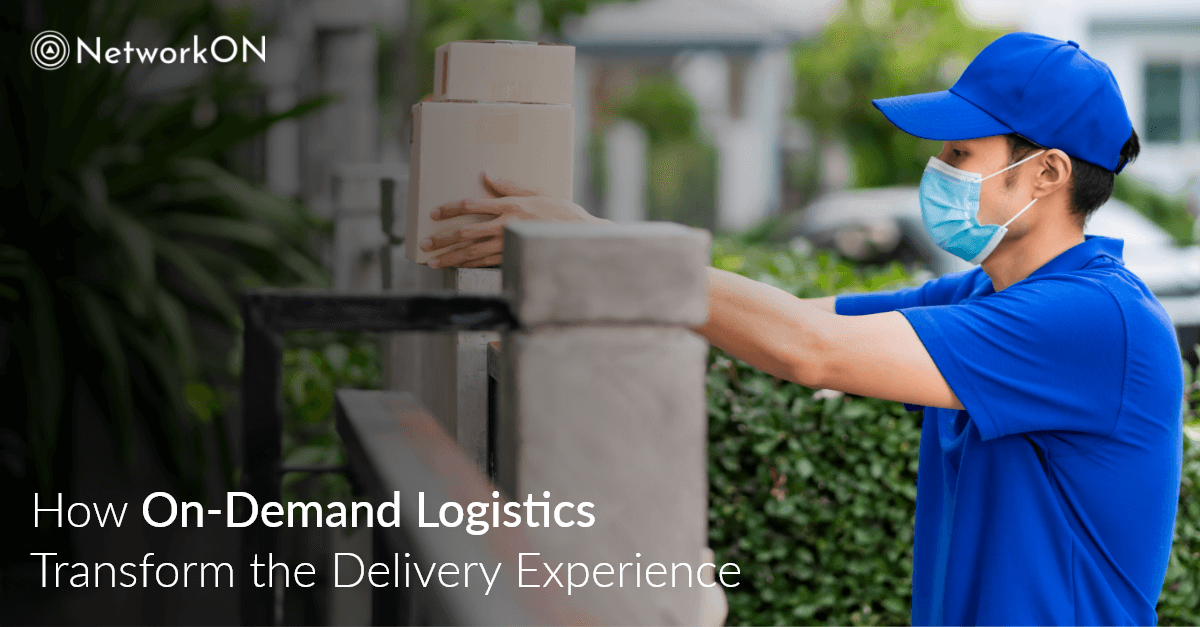On-demand logistics have emerged as the game-changer over the last few years—offering significant advantages over traditional logistics, including lower operational costs and a greener footprint.
With the advent of on-demand logistics, the entire industry is facing disruption. As people are already accustomed to the convenience and ease through cabs on demand, ridesharing on-demand, food delivery on demand etc., their expectations towards delivery services have changed.
The scenario has changed not just for the users but also the investors—as they have shown keen interest in on-demand logistics. Market revenue is expected to massively rise to $75.0 billion by 2030, for the on demand logistics industry.
In this article, we’ll show you how the advent of on-demand logistics and the development of sophisticated courier management solutions have transformed the delivery experience for the end customers.
Meeting Dynamic Customer Expectations
The business sector is still facing different forms of challenges in the traditional logistics processes that are prevalent across many countries in the world, including the higher cost of ownership, hectic paperwork, and lack of reliable service-level agreements.
However, traditional logistics are also asset-heavy that causes a lot of wear and tear on the assets to achieve utilization of key performance indicators, and underutilization during fluctuating demands.
Such pitfalls in addition to changing customer expectations have pushed logistics providers to take drastic measures to improve the delivery experience.
With on-demand logistics, end customers across the world get same-day deliveries of a wide range of products, from groceries to consumer electronics. Even in the aftermath of the COVID-19 pandemic, the logistics industry has been at the forefront of operations—working round the clock to deliver products above and beyond the expected SLAs.
The existence of speedy logistics has helped several micro, small and medium-level businesses by supplying goods to the customers on the same day of making an order. Thus, the integration of third-party logistics providers with businesses has become important to ensure lower costs and higher efficiencies.
This makes on-demand logistics imperative for up-and-coming e-commerce companies for delivering goods to end customers in a reliable and hassle-free manner.
Enabling Customer-Centric Logistics
The key differentiating factor for on-demand logistics from traditional logistics is the high level of convenience and flexibility. It enables customers to select from a variety of service providers and get greater visibility into the supply chain with real-time tracking of their shipment.
Besides providing customers with the benefit of transparency, it also helps suppliers to examine the process and look for areas of improvement in the supply chain.
Access to Data Analytics
The use of real-time information and interactive analytics help companies enhance their on-demand logistics efficiencies and attract and retain more customers.
By leveraging analytics to build insights and uncover patterns related to customers, processes, and trends will help in learning how much resources it takes to serve specific customers in different regions, enabling better route management and cost-saving.
It will also enable companies to anticipate the likelihood of service issues due to disruptions and sudden demand spikes. In such situations, companies can use a proactive approach to notify their customers of such situations and build strong brand credibility.
On-Demand Logistics and Courier Management
On-demand logistics and courier delivery apps have made it possible for users to select top service providers, book deliveries, and choose pickup dates of their choice–anytime and anywhere.
This has allowed businesses to invest in high-end services and deal with their target consumers without involving any third parties in the equation.
Unlike traditional logistics models, where courier business is not effective in managing warehouse and supply chain management processes, on-demand technology allows providers to seamlessly manage the warehouse and supply chain through customized on-demand courier delivery apps.
Such apps also simplify the tracking process, proliferating effective communication between the drivers and the company executives.
Efficient Fleet Management and Enhanced Customer Experience
With real-time fleet tracking, companies are able to efficiently manage all their vehicles.A dedicated courier delivery app also allows company executives to stay connected on a 24/7 basis with their delivery persons.
It also helps drivers by showing short routes, diversions, and roadblocks, allowing on-time deliveries.
With such benefits, companies also get a competitive advantage over others, resulting in higher popularity among the target audience and a higher level of customer satisfaction.
On-Demand Logistics and the Future of Retail
On-demand services will play a more significant role in the near future with the setting up of third-party warehouses across the countries.
As on-demand logistics has become the norm for many businesses trying to establish an omnichannel presence, the future of retail is in the development of fulfillment centers as opposed to traditional brick-and-mortar shops.
With the integration of newer technologies and innovations, the supply chain system will benefit from augmented reality, drones, self-driving trucks, and AI-powered devices.
With the right partner like NetworkON, you get all the necessary elements of on-demand logistics and courier management at your fingertips.
Contact us at info@networkon.io or visit our website to learn how our on-demand logistics solutions can help you resolve your business queries.



0 Comments